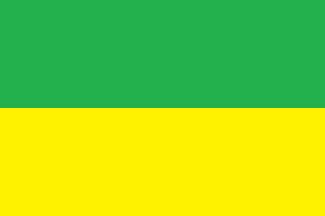1806–1947 → 1901 570 km (220 sq mi) Today part of Haryana | Established 1806 1901 15,229 | |
 | ||
Loharu State was one of the princely states of India during the period of the British Raj. It was part of the Punjab States Agency and was a nine-gun salute state.
Contents
- History
- Notable members of the Loharu dynasty
- Post Independence
- Loharu descendants in Pakistan
- References
Loharu State encompassed an area of 222 square miles (570 km2), and was situated in the south-east corner of the undivided Punjab province, between the district of Hissar and the Rajputana Agency. In 1901, the state had a population of 15,229 people, of whom 2,175 resided in the town of Loharu.
History
Loharu town, the seat of the state's administration town got its name from the Lohars (local blacksmiths) who were employed in the minting of coins for the erstwhile Jaipur State. The princely state of Loharu was founded by Ahmad Baksh Khan in 1803 when he received the town of Loharu from the British East India Company as a reward for his services against the Jat rulers of Bharatpur (along with the pargana of 'Firozepur Jirka' (now in Gurgaon district) from Lord Lake).
Ahmad Baksh Khan was succeeded by his eldest son, Sams-ud-din Khan, in 1827; his reign did not last long: in 1835 he was executed by the British Raj for being involved in the conspiracy to kill the British Resident to Delhi, Sir William Frazer, subsequently the pargana of Firozepur was taken away by the British and the state of Loharu was given to his brothers, Amin-ud-din and Zia-ud-din Khan. Both were themselves kept under surveillance after the Indian Rebellion of 1857 for some time, before being released and their positions restored.
The haveli of 'Nawab of Loharu', known as Mahal Sara, lies in Gali Qasim Jan, Ballimaran, where his son-in-law, noted poet Mirza Ghalib stayed for a few years, whose own haveli lies a few yard away. Now a gali is known as Kothi Nawab Loharu lane in Ballimaran, Chandni Chowk, Delhi.
Alauddin Ahmed Khan succeeded his father Amin-ud-din Khan in 1869 and received the title of Nawab. Alauddin’s son, Amir-ud-din Ahmad Khan (1859–1937), after managing the state on his father’s behalf, succeed him in 1884, though from 1893 to 1903, he remained administrator and adviser of the state of Maler Kotla – during this time, the state was being handled by his younger brother, Bashiruddin Ahmed Khan. In 1903, Amir- ud-din Ahmad Khan also received the K.C.S.I honour from the British Government and after 1 January 1903 was allowed a 9 gun personal salute. He later became a member of the Viceroy of India's legislative council.
In 1920, he abdicated to his second son, Aizzuddin Ahmad Khan, though he died early in 1926, leaving the state to his son, Amin ud-din Ahmad Khan (1911–1983) - the last Nawab. However, since the new Nawab was still young, Amirud-din Ahmad Khan stepped in and took care of the state till 1931.
After the Independence of India in 1947, the state acceded unto the Union of India and many of the ruling family and the city's Muslim inhabitants re-settled in Lahore, Pakistan, though the Nawab and his direct descendants (except for the eldest daughter of Nawab Aminuddin Ahmed, Mahbano Begum who lives in Islamabad), stayed on, in India.
Notable members of the Loharu dynasty
The ruling family of Loharu was linked by blood or marriage to several important Muslim personalities of the 19th century, including:
